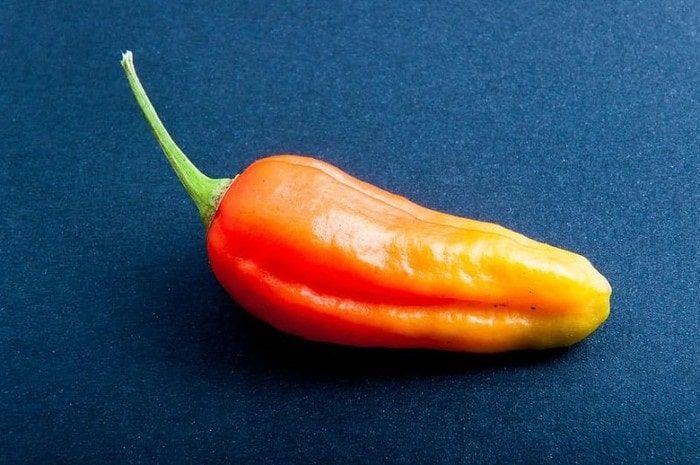Does Ecuador have the oldest pepper in the Americas?
Southern Ecuador holds a treasure trove of about 8,000 years old, and what scientists consider to be the oldest chili pepper in the Americas.

Southern Ecuador holds a treasure trove of about 8,000 years old, the starch granules of what scientists consider the oldest chili pepper in the Americas, a product surrounded by culture, history, legends, and controversial uses. Lenticularly flattened and with a shallow central depression, the granules are about 18 microns long and reveal a central line or a divided figure with sharp parallel edges.
Although discovered in 2014 by Puerto Rican researcher Jaime Pagán, in Cubilán (Azuay province), his study was barely documented in an English-language journal, so the National Institute of Cultural Heritage (INPC) has now resumed the project to learn about the anthropological aspects of these tiny granules and help map out the "Ruta del Ají" (chili pepper route).
"We want to see what role this food had in the culture," Martha Romero of the INPC's laboratory and analysis unit told Efe, recalling that 8,000 years ago there was no pottery and the way people lived depended on controlling the environment around them.
Consumed throughout the American continent, the chili pepper has been discovered in archaeological research by several American countries, which have found macro and micro remains (pollen and phytoliths) dating back some 6,000 years. But the Azuay pepper, a species not yet identified and found along with a scraper made from starch granules, seems to indicate that Ecuador was one of the first centers of domestication of the chili pepper, says Romero.
More research
The discovery points to highly advanced and organized societies that began to dominate nature with knowledge and know-how, according to INPC director Joaquín Moscoso. Knowing what their diet was -he says- will allow learning which diseases the population of that time was vulnerable to, to decipher life averages and how their societies were shaped, among many other questions.
In cooperation with private entities, the institute is trying to compile all the information and documentation of ancestral knowledge linked to the cultivation and consumption of chili peppers and to characterize the endemic species. And perhaps even get the food processes linked to this traditional product declared intangible cultural heritage because the ancestral knowledge about the cycles of harvesting, consumption, and ritual of chili in indigenous communities is being lost.
This is not only due to recent processes but also to the first contacts with the Spanish colonizers, who tried to exclude the chili pepper from the historical memory of the indigenous and mestizo peoples within a strategy of domination, according to the INPC. Despite this, the use of chili peppers transcended the culinary to acquire a relevant status in the magical-religious world of the aborigines, who used them in initiation or birth rituals and even in sexuality.
It also had a medicinal use against digestive problems or an earache; and another, more controversial, of teaching disobedient children (they passed it through their eyes) and unfaithful adults (to whom they introduced it through the anus). Moscoso claims that chili peppers are a symbolic element of society that "brings together and generates social cohesion, meanings, and relationships" throughout Latin America, which is why the INPC wants to discover the trajectory of this spicy American element.
The chili pepper route
In the recovery of this legacy that crosses the frontiers of science, the seed of what is now the documentary film project "La Ruta del Ají" also germinated in 2015, a research work that has followed the trail of this millenary fruit not only in anthropological or archaeological terms but also in cultural, historical, gastronomic and ritual terms.
The research of Omar Arregui, who is heading this ethnographic documentary, has already passed through Peru, Venezuela, Mexico, and Ecuador, and studies are on the agenda in Bolivia, Guatemala, Brazil, Costa Rica, Colombia, Argentina, Chile, Panama, and Nicaragua. And although they do not have historical traces of the chili pepper, the United States and Canada are also included in their project due to the high consumption they have.
The project seeks, among other objectives, to form an interdisciplinary collaborative network, to document ancestral knowledge related to the cultivation and consumption of chili peppers, and to characterize their endemic species and their prevalence over time as part of the culture of the American peoples.
"In Ecuador, there are 132 varieties of chili peppers, but only eight are consumed," said Arregui, lamenting that in some cases this spicy product is seen as a mere accompaniment to stews, without taking into account its vast importance from the archeological, cultural and even artistic, mystical and energy angles.




